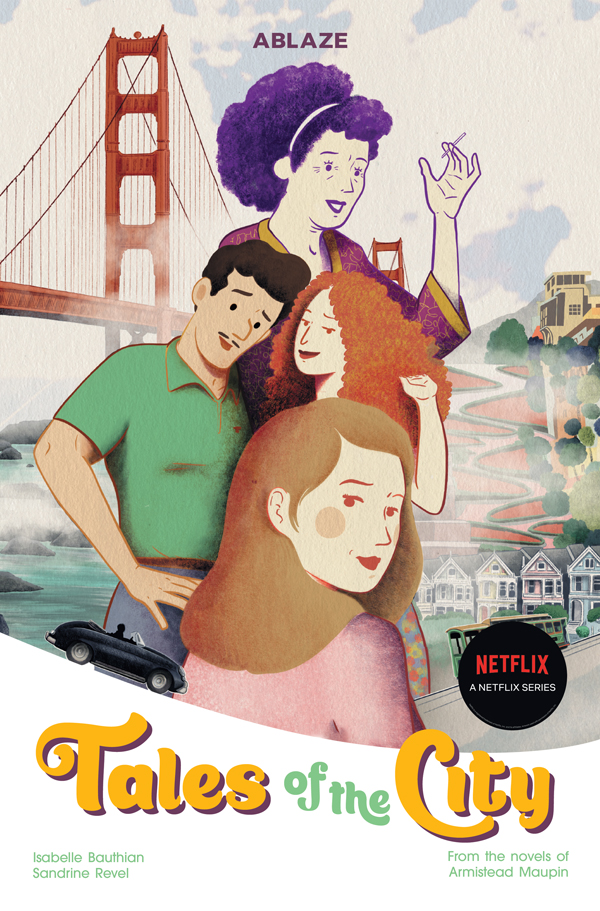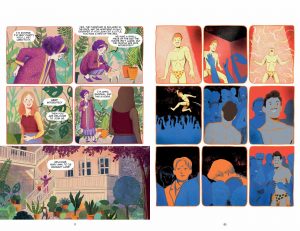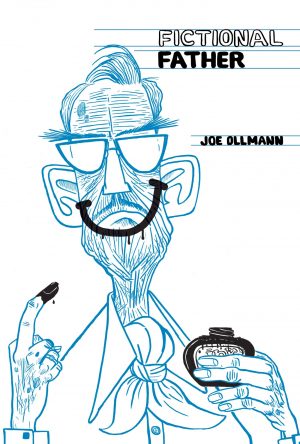Review by Ian Keogh
Armistead Maupin tapped into a zeitgeist when he first began serialising his dramas about the residents of 28 Barbary Lane during the late 1970s in the San Francisco Chronicle. Packed with charm and sympathy, they reflected San Francisco’s vibrant community as it was rather than the perception the wider world still had of a city full of hippies, although Maupin acknowledges how the past shaped his present. Maupin followed his cast through six novels produced over just a dozen years to 1989, then picked up on them in 2007 for three more. Tales of the City has spawned several TV shows, the most recent in 2019, yet for something so intrinsically American it’s surprising this first graphic novel adaptation is the work of French creators. Isabelle Bauthien breaks down Maupin’s stories, while Sandrine Revel brings the people to life.
In novel form Tales of the City follows a large, individual cast through their day to day dramas, their difference seen through Mary Ann’s at first wide eyes. Even allowing for 120 story pages, the graphic novel can’t cover the entire cast and all the drama, with the result that this Tales of the City is more a romance story than anything else, and that was only a small part of Maupin’s original. It means anyone who knows the novel is likely to find this unsatisfactory. However, within the restrictions Bauthien and Revel produce a workable outing retaining the charm and some of the shocks by concentrating primarily on the people Mary Ann works with. The problems associated with Edgar Halcyon and his family dominate the first half of the adaptation, with the supporting cast formed from the other tenants of Mary Ann’s building gradually slipping in along with indicators of San Francisco’s alternative lifestyles. However, the lack of time spent with some characters means big moments come out of left field and lack the necessary impact, and people too often drift in and out. Having at first been so prominent, by the time Edgar returns for a sequence near the end he’s almost been forgotten.
The stories are about people, but San Francisco is such a constant backdrop that for Maupin it was an additional character, shaping everyone, so it’s a shame that Revel’s version is so generic. That apart, she’s very good at bringing the cast to life, posing them well and trusted by Bauthien to compact several pages of the novel at a time in single, wordless illustrated pages. She primarily sticks to pastel earth tones, but can slip into bold, vivid colour for contrast.
When there’s a strong scene, such as Mouse’s parents visiting, the graphic novel sparkles, and most shocks have the intended impact, but too many questions about people are left unanswered. In the case of Anna Madrigal that’s deliberate, but other characters lack depth, especially Mary Ann, who’s never developed beyond a sounding board. It leaves this Tales of the City as a readable, but flawed adaptation, and that’s likely to transmit to readers unfamiliar with the novel.





